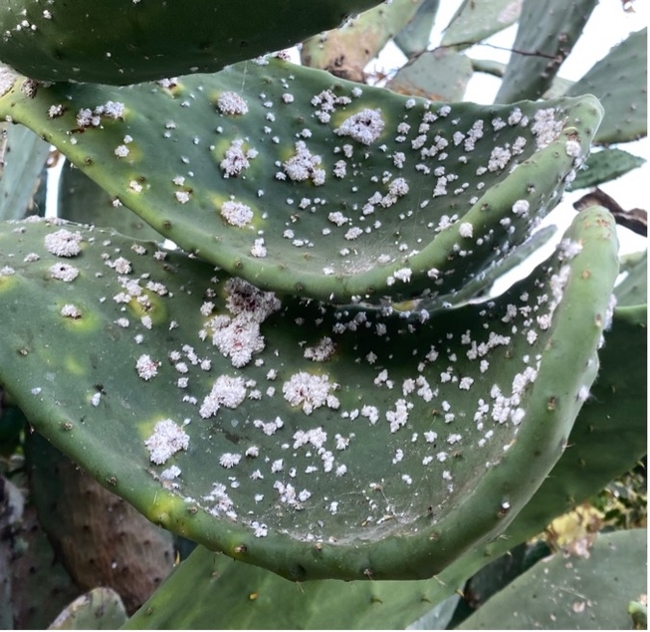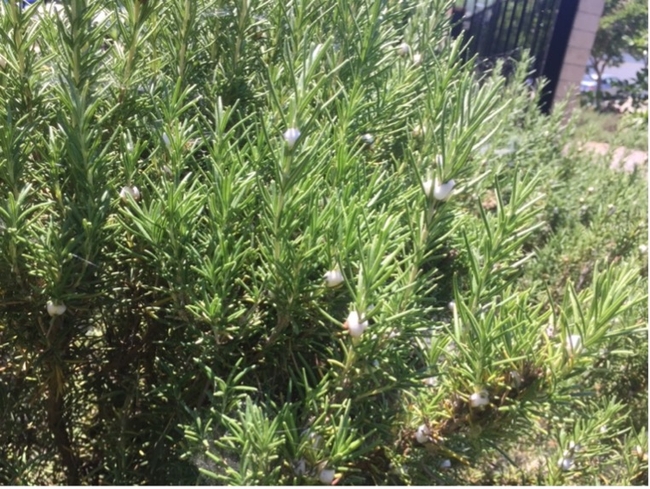It may be after Labor Day, but some of your plants may still be wearing white, breaking that long-standing fashion “rule”! While many of us don't adhere to this old rule for our wardrobes these days, you may care about white stuff on your plants this time of year.
There are several white colored pest insects and diseases that you could be noticing on your plants.
Scales

Several types of scale insects are white. Each has their own host preferences, or plants they feed on.
- Cochineal scales feed only on cacti, usually prickly pears. On the outside they are white and waxy but have bright red bodies. If you scrape them off, you'll notice a red stain left behind.
- Cottony cushion scale feeds on a variety of woody ornamental plants. Common hosts in California are citrus, cocculus, nandina, and pittosporum. Adult scales are elongated and fluted.
- Euonymus scale feeds on many different plants but can be a serious pest to Japanese Euonymus (Euonymus japonica). Immature males are white and elongated with a brownish-yellow area at one end.
See the UC IPM Pest Notes: Scales to learn more about these and other scales and how to manage them.
Mealybugs
Mealybugs are whiteish-gray, oval, wax-covered insects. They can be found on many different plants, from fruit trees to houseplants, often hiding in protected places like branch crotches.
Powdery mildew
Powdery mildew often appears as white powdery spots (fungal spores) primarily on the tops of leaves. It can infect fruits and fruit trees, vegetables, and landscape plants in shady conditions when temperatures are between 60 to 80 degrees.
Whiteflies
Whiteflies are tiny insects with white, waxy wings and yellow bodies. They feed in large colonies on the undersides of leaves and have a very wide host range, including trees, vegetables, houseplants, and flowers.
Hackberry wooly aphids
This introduced aphid species infests Chinese hackberry and other hackberry (Celtis) plants. Hackberry wooly aphid adults appear in white, fuzzy masses on shoot terminals and leaves.

Spittlebugs
Adult spittlebugs are often brown, but they produce a white, foamy excrement on plants that looks like spit. They are known to feed on just about any plant.
Mushrooms
Many fungi produce white fruiting bodies that may pop up in your lawn, mulched landscape beds, or on trees and stumps. Puffballs and other fungi in lawns are mostly just a nuisance. However fungi on trees can sometimes cause wood decay and harm trees.
For more help diagnosing a plant problem or identifying a pest, see the UC IPM Plant Problem Diagnostic Tool or contact your local UC Master Gardeners.
